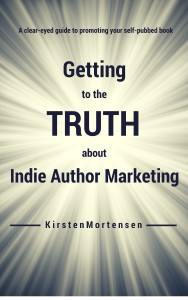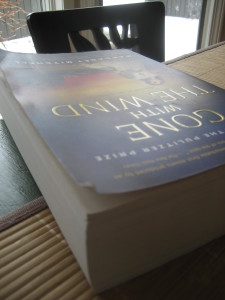In my last couple of posts about indie author marketing, (one here and one here) I’ve referenced the need for data.
You need data to market. You need data to even plan how to market.
That probably sounds almost too reasonable to challenge, right?
But it also brings us to a couple more questions:
1. What data do we need, and
2. How do we make sense of it?
It’s All About the Data
The answer to the first question also sounds almost too easy, doesn’t it?
What data do we need? Why, data on how indie authors are successfully marketing their books, of course!
But is that really the best answer?
Maybe not.
The BBC published a fascinating article last week about surviving disasters. It cites the work a guy named John Leach, a researcher at the University of Portsmouth who studies how people respond when their ferry starts to take on water, or their plane crashes, or a terrorist bomb goes off in their office building.
But surprisingly, he’s not interested so much in the people who survive. He’s interested in the people who don’t.
Stories about survival often focus on the 15%, and what is so special about them that helps them stay alive. But Leach thinks this is the wrong question. Instead, we should be asking, why do so many people die when they need not, when they have the physical means to save themselves?
Huh?
This goes against everything we’re “taught” about learning, doesn’t it?
We’re taught to study success. We’re taught to seek out winners and copy them, find mentors and ask them to guide us.
And there’s a place for that.
But we also need to look at losers. We need to look at failure. We need to look at what doesn’t work.
And so often, we indie authors ignore the failures. We focus on the success stories.
Focusing exclusively on success creates problems, guys …
It creates a couple of serious problems.
First, it introduces cognitive bias — specifically, a subset of confirmation bias that’s called survivorship bias.
Author Tobias Buckell wrote a great piece on this in 2013.
It ought to be required reading for every indie author.
“The problem, right now, in eBook direct sales,” Buckell writes, “is that everyone is paying and listening to people” who have broken out. Writers who have achieved bestsellerdom.
“They’re listening to everything they say, and sifting everything they say as if it’s a formula for success.”
That ignores the vast — the overwhelming — number of indie authors who never sell more than a handful of books.
And what can we learn from them?
What have they tried that does not work?
How many times have failed authors applied the same “proven formulas” as successful authors?
We don’t know.
We. Don’t. Know.
And because we don’t know, we don’t really understand what variables are at play.
Focus on that for a moment.
Variables. Those tricky little gremlins that sneak in and try to skew every experiment ever conducted.
You have to control them if you want to understand the experiment.
But you can’t control them if you don’t know what they are.
I’ll write more about cognitive bias in a future post (or posts). But today I want to focus on the psychological consequences of falling under the sway of survivorship bias.
Don’t be hypnotized by dangerous illusions
Buckell touches on one of those consequences in his post:
Like in most cultish behavior, if you follow the rules and don’t get the results, you’re either ostracized, ignored, or it’s pretended you don’t exist. Many who don’t get the same results just shut up and go away.
When you apply some “winning formula” and it doesn’t work, you often find yourself marginalized.
And that hurts.
Now we’re all big boys and girls. And you know this as well as I do: we must grow thick skins if we’re going to survive as indie authors.
So I’m not bringing this up to whine. I’m not bringing it up so that I can decry how horribly unfair it all is.
I’m bringing it up because you and I and every other indie author out there on the long tail needs to be aware of what’s going on. We need to wake up. We need to know what we’re up against.
Which leads to the second psychological consequence of survivorship bias:
Discouragement.
You look out there and it seems like everyone else is succeeding.
And that’s a dangerous illusion.
You are a writer.
Write.
Don’t become transfixed with an illusion.
Don’t start comparing yourself to Internet spirits who seem to have achieved something that you also want.
Write.
Write.
Write.
Like This Post? Want to Stay In Touch?
Everyone who subscribes to my Getting to the Truth email list before midnight, E.S.T., on Sunday February 15 will be entered in a drawing to win a free e-copy of the book.
Subscribers will receive brief, periodic updates on the book, including links to blog posts like this one that share information I’ve dug up about indie marketing. These will be hard-hitting, extremely useful posts that you do not want to miss.
I will not share your contact information with anyone else, and you can unsubscribe at any time.
Subscribe by using the form below, and please pass along this link to your indie author friends so they can participate as well.
Thanks for your interest. Thank you for your support.



